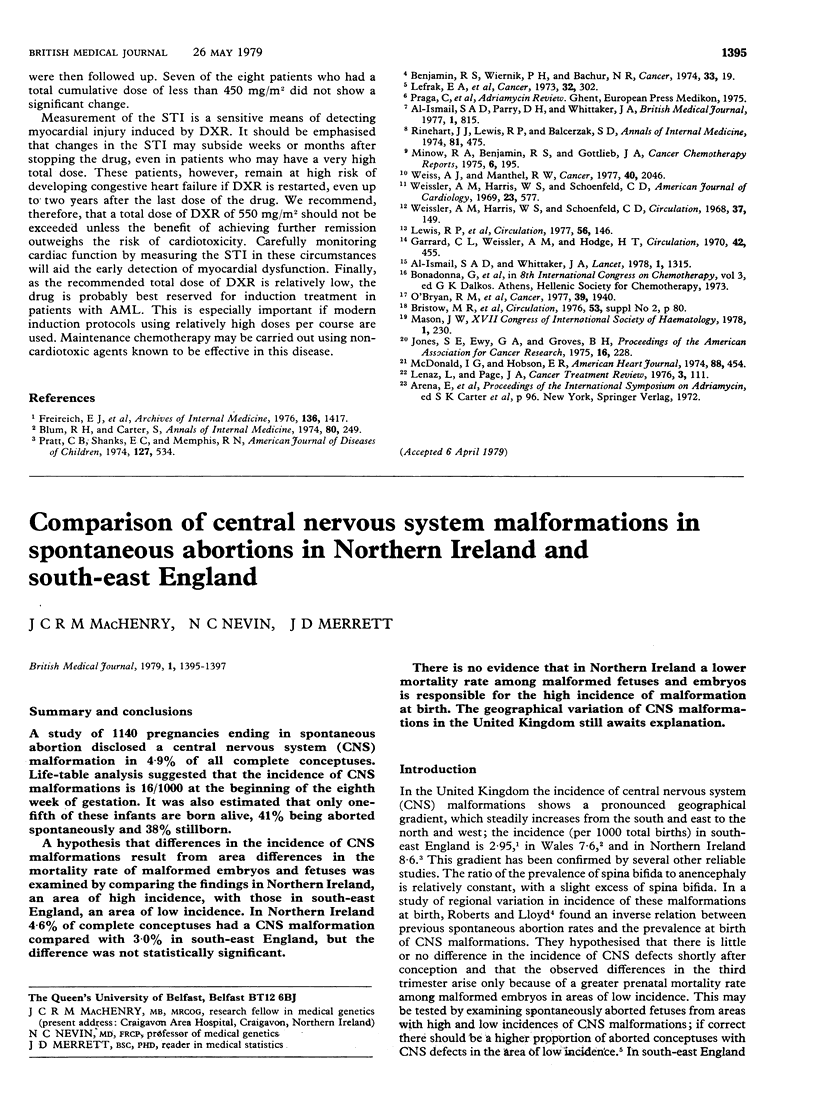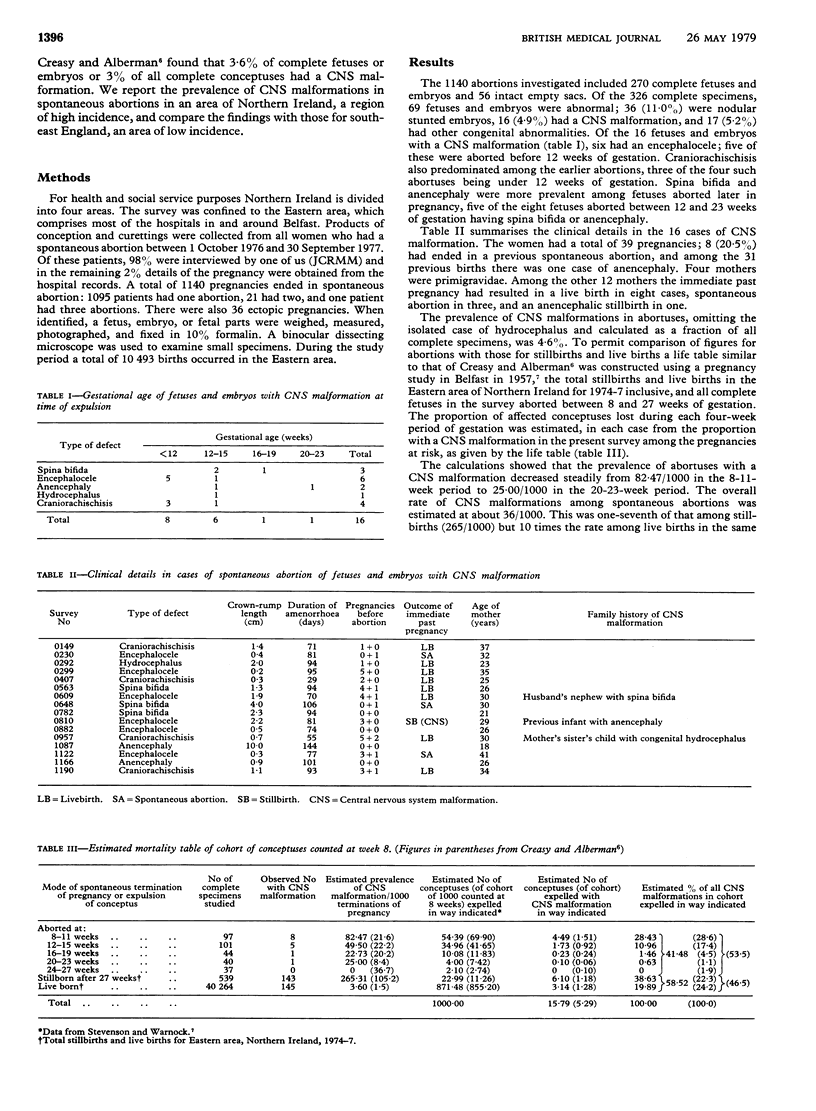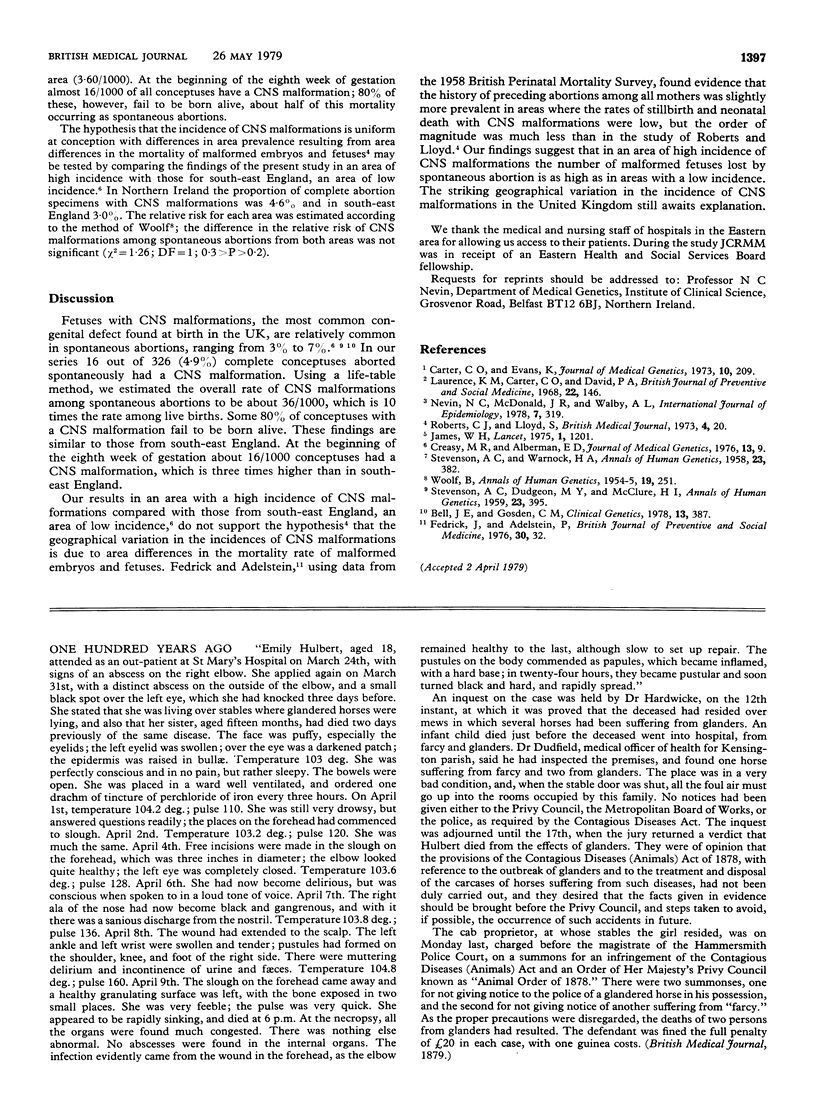Abstract
A study of 1140 pregnancies ending in spontaneous abortion disclosed a central nervous system (CNS) malformation in 4.9% of all complete conceptuses. Life-table analysis suggested that the incidence of CNS malformations is 16/1000 at the beginning of the eighth week of gestation. It was also estimated that only one-fifth of these infants are born alive, 41% being aborted spontaneously and 38% stillborn. A hypothesis that differences in the incidence of CNS malformations result from area differences in the mortality rate of malformed embryos and fetuses was examined by comparing the findings in Northern Ireland, an area of high incidence, with those in south-east England, an area of low incidence. In Northern Ireland 4.6% of complete conceptuses had a CNS malformation compared with 3.0% in south-east England, but the difference was not statistically significant. There is no evidence that in Northern Ireland a lower mortality rate among malformed fetuses and embryos is responsible for the high incidence of malformation at birth. The geographical variation of CNS malformations in the United Kingdom still awaits explanation.
Full text
PDF


Selected References
These references are in PubMed. This may not be the complete list of references from this article.
- Bell J. E., Gosden C. M. Central nervous system abnormalities--contrasting patterns in early and late pregnancy. Clin Genet. 1978 May;13(5):387–396. doi: 10.1111/j.1399-0004.1978.tb04136.x. [DOI] [PubMed] [Google Scholar]
- Creasy M. R., Alberman E. D. Congenital malformations of the central nervous system in spontaneous abortions. J Med Genet. 1976 Feb;13(1):9–16. doi: 10.1136/jmg.13.1.9. [DOI] [PMC free article] [PubMed] [Google Scholar]
- Fedrick J., Adelstein P. Area differences in the incidence of neural tube defect and the rate of spontaneous abortion. Br J Prev Soc Med. 1976 Mar;30(1):32–35. doi: 10.1136/jech.30.1.32. [DOI] [PMC free article] [PubMed] [Google Scholar]
- James W. H. Letter: Congenital-malformation rates and spontaneous-abortion rates. Lancet. 1975 May 24;1(7917):1201–1201. doi: 10.1016/s0140-6736(75)93196-7. [DOI] [PubMed] [Google Scholar]
- Laurence K. M., Carter C. O., David P. A. Major central nervous system malformations in South Wales. I. Incidence, local variations and geographical factors. Br J Prev Soc Med. 1968 Jul;22(3):146–160. doi: 10.1136/jech.22.3.146. [DOI] [PMC free article] [PubMed] [Google Scholar]
- Nevin N. C., McDonald J. R., Walby A. L. A comparison of neural tube defects identified by two independent routine recording systems for congenital malformations in Northern Ireland. Int J Epidemiol. 1978 Dec;7(4):319–321. doi: 10.1093/ije/7.4.319. [DOI] [PubMed] [Google Scholar]
- STEVENSON A. C., DUDGEON M. Y., McCLURE H. I. Observations on the results of pregnancies in women resident in Belfast. II. Abortions, hydatidiform moles and ectopic pregnancies. Ann Hum Genet. 1959 Dec;23:395–414. doi: 10.1111/j.1469-1809.1959.tb01482.x. [DOI] [PubMed] [Google Scholar]


